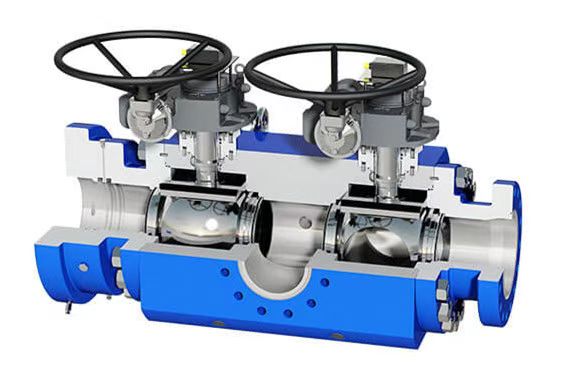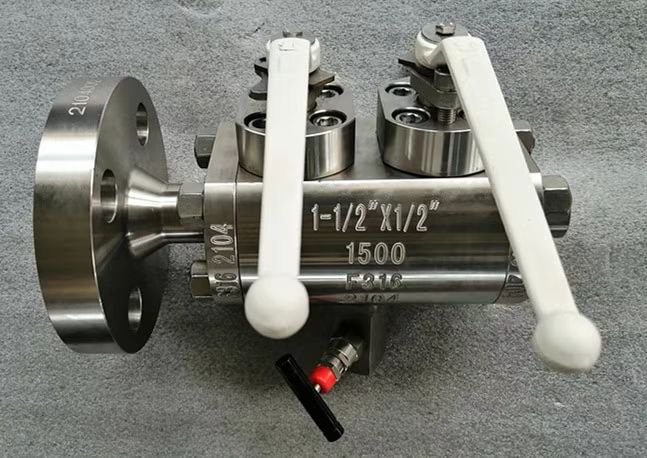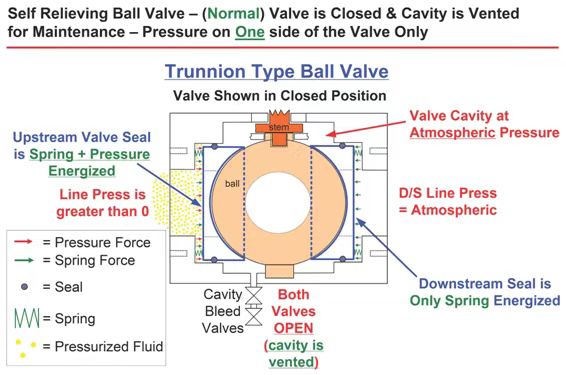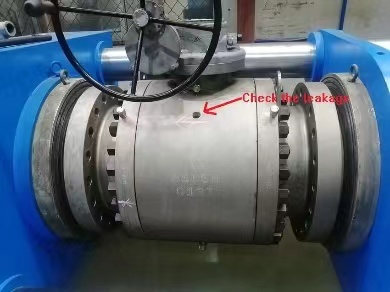Double Block and Bleed Ball Valve: DBB Ball Valve is a combination of one or more block/isolation ball valves, and one or more bleed/vent valves, usually ball or needle valves. Double block and bleed valves operate on the principle that isolation can be achieved from both the upstream and downstream process flow / pressures. This is achieved by two ball, gate, globe, needle, etc. Valves placed back to back, with a third “isolatable” Valve in the centre cavity.
Usually, there are two types of double block and bleed ball valves, according to the experience of customer request.
Type 1- A Ball Valve With Two Balls And A Bleed Valves
The double block and bleed ball valve has a single body design with twin balls and a needle valve, the needle valve is installed between the twin balls. Double block and bleed ball valves are available bi-directional seal in metal seated and soft seated style, with bubble tight shut off.
Double Block and Bleed Ball Valve With Twin Balls And A Bleed Valve

Double Block and Bleed Ball Valve Flanged RTJ Ends x NPT Ends

Type 2-A Trunnion Mounted Ball Valve With Double Block and Bleed Funtion
This type of double block and bleed ball valve is a trunnion mounted ball valve in the closed position, provides a seal against pressure from both ends of the valve with a means of vending/bleeding the cavity between the seating surfaces.
According to API 6D “Specification for Pipeline Valves” standards, a double block and bleed ball valve (DBB bal valve) is a “single valve with two seating surfaces that, in the closed position, provides a seal against pressure from both ends of the valve, with a means of venting/bleeding the cavity between the seating surfaces.
As the definition, a double block and bleed ball valve has two seats, each of the seats provide a seal against pressure seperately. That is to say one seat is sealing the fluid from the upstream and the other seat is sealing the fluid from the downstream. For a double block and bleed trunnion mounted ball valve, when the valve is in closed position and the fluid comes from the upstream, it pushes the seat against the ball to realize the sealing. The other seat is sealing in the same way.
How does the function of venting/bleeding work? When the pipeline is with pressure, the trunnion ball valve is closed with the fluid trapped in the ball and then there is pressure in the ball. When the temperature in the ball becomes higher, the pressure in the ball will rise too. It is necessary to vent/bleed the pressure in case of risk when the pressure in the ball becomes high enough. For a trunnion ball valve with bleed function, the pressure in the ball pushes the seat back as the spring behind the seat compresses. Then the there is vent/bleeding between the sealing surfaces. Generally speaking, the venting/bleeding is required at the pressure of less than 1.33 times of the design pressure rating for the ball valves as API 6D specifications. Some critical project request to vent/bleed at the pressure of less than 1.1 times of the design pressure rating. (eg. For a PN20 trunnion ball valve, the pressure trapped in the ball shall vent/bleed at the pressure of less than 2.2 Mpa).
As the definition, a double block and bleed ball valve has two seats, each of the seats provide a seal against pressure seperately. That is to say one seat is sealing the fluid from the upstream and the other seat is sealing the fluid from the downstream. For a double block and bleed trunnion mounted ball valve, when the valve is in closed position and the fluid comes from the upstream, it pushes the seat against the ball to realize the sealing. The other seat is sealing in the same way.
How does the function of venting/bleeding work? When the pipeline is with pressure, the trunnion ball valve is closed with the fluid trapped in the ball and then there is pressure in the ball. When the temperature in the ball becomes higher, the pressure in the ball will rise too. It is necessary to vent/bleed the pressure in case of risk when the pressure in the ball becomes high enough. For a trunnion ball valve with bleed function, the pressure in the ball pushes the seat back as the spring behind the seat compresses. Then the there is vent/bleeding between the sealing surfaces. Generally speaking, the venting/bleeding is required at the pressure of less than 1.33 times of the design pressure rating for the ball valves as API 6D specifications. Some critical project request to vent/bleed at the pressure of less than 1.1 times of the design pressure rating. (eg. For a PN20 trunnion ball valve, the pressure trapped in the ball shall vent/bleed at the pressure of less than 2.2 Mpa).

How is a double block and bleed ball valve tested?
Remove the release valve, when the valve is in fully closed position and both ends of the valve are pressurized separately, to check the leakage from release valve postion.

Double Block and Bleed Ball Valve Pressure Test
 WENZHOU WEITUO VALVE CO., LTD.
WENZHOU WEITUO VALVE CO., LTD.